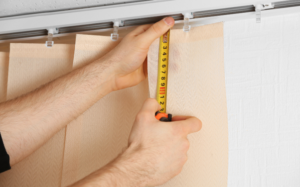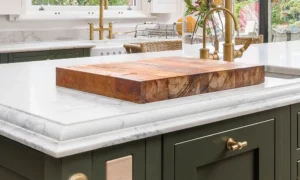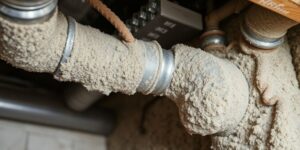5 Tell-Tale Signs Your Timber Table Needs Refinishing

Is your timber dining table looking a little bit worse for wear? Wooden tables are a staple in many homes, and when they are looking great they can add a lot of warmth and richness. But if you’ve noticed cracks, stains, flakiness or stickiness, you might not be feeling so great about your table. The good news is, lots of these problems can be easily fixed with refinishing.
In this article, we take a look at the common causes of damage to timber tables, the tell tale signs that it’s time to refinish your table and whether you should do it yourself or hire a professional.
Common causes of damage to timber tables
Wood is an excellent material for tables as it is attractive, durable and reliable. However, even wood is vulnerable to damage and it’s important to understand how to prevent damage and what to do when you notice it. Below are some of the most common causes of damage to timber tables.
Moisture
When exposed to water without the right protection, wooden tables are susceptible to mould, rot and disfiguration. Different types of wood will respond differently to moisture, but the result is often unsightly and can affect the structural integrity of the table.
Low humidity
Wood responds to humidity in the atmosphere, expanding and shrinking. As above, you don’t want too much moisture as that can lead to issues with warping and mould. However, too little moisture in the air can cause cracking and shrinking.
The ideal humidity for wood furniture depends on the type of wood, but is usually somewhere between 35% and 55%. You can address humidity issues inside your home with an inexpensive humidifier.
Sunlight
Direct exposure to sunlight, especially in Australia where the sun can be particularly harsh, can lead to fading of colour in wood. This can dramatically change the appearance of your table. If sunlight hits part of the table and the other part is in shade throughout the day, this can cause uneven fading.
If moving the table into shade is not possible, consider UV resistant finishes for your table and / or UV resistant film for your windows.
Physical damage
Bumps, scratches and stains can come from a wide range of sources. Whether you accidentally scratched your table while moving houses or didn’t wipe up a spill fast enough, obvious physical damage to a wooden table can look unattractive and may lead to further problems.
Age
As with any material, timber ages over time. That’s why it’s important to give your timber table some love and attention at regular intervals. With ongoing maintenance, you can preserve your much loved piece of furniture for years to come. Addressing small issues straight away can help you prevent major damage and costly repairs later on.
Tell tale signs that your timber table needs refinishing
Not sure whether your table needs refinishing or not? Check out these tell tale signs that it’s time.
1) A sticky feeling
If you’ve cleaned your timber table, but still notice a sticky or tacky feeling that won’t go away it’s probably time to get your table refinished. When the finish on a wooden table starts breaking down, it results in this unpleasant stickiness. It’s a sign that the finish needs to be redone. If you notice stickiness, don’t put off refinishing as this can lead to more major issues later on when the finish is no longer protecting the wood.
2) Exposed wood
If the finish on your table has cracked and the wood beneath is exposed to the air, you will need to get your table refinished. The cracked finish is no longer able to protect the wood, leaving it vulnerable to damage. Stripping the existing finish and recoating the table with the correct finish will improve its durability and appearance.
3) A flaky finish
Have you noticed the finish on your table flaking or chipping anywhere? Not only can this look unattractive, it will begin to expose the wood underneath and leave it vulnerable. A good finish should look smooth and consistent across your whole table.
4) Dents and scratches
A few superficial scratches might not need immediate attention, but if your timber table has a number of deep, significant scratches or dents it’s probably best to do something about it. Since tables are used multiple times everyday, it’s pretty normal for them to accumulate blemishes over time. A refinishing or restoration job can help make your table look fantastic again.
5) Discolouration
If you’ve noticed that your table isn’t a consistent colour, or that the colour is fading or yellowing, it could be time to refinish it. Discolouration is often caused by moisture, but it can also occur from too much sun exposure. Refinishing your table can help restore it to its former glory, with a lovely rich and consistent colour.
When is a table too far gone to be salvaged?
If you’ve got a timber table that looks in really bad shape, you might be wondering whether it’s worth saving at all. In some cases, a table might be beyond repair, for example if it has extensive water damage or is rotting.
But before you give up on your table, consider your options with restoration and refinishing. A lot of damage can be repaired, if the table is structurally sound. If the wood itself is a high quality timber, restoring it could increase its value. With a bit of tender love and care, you might fall in love with your table all over again.
DIY vs professional table restoration
If you have the tools, time and knowledge, you might consider refinishing your table yourself. Typically, the process will involve cleaning the surface, stripping the surface back or sanding the table and then applying the appropriate finish.
If you aren’t confident about the process or have a highly ornate table such as an extendable timber dining table with hand carved details, it’s best to call a professional furniture restorer. They can offer expert advice about the best way to restore your table to its former glory and make sure the job is done to the highest standard.







